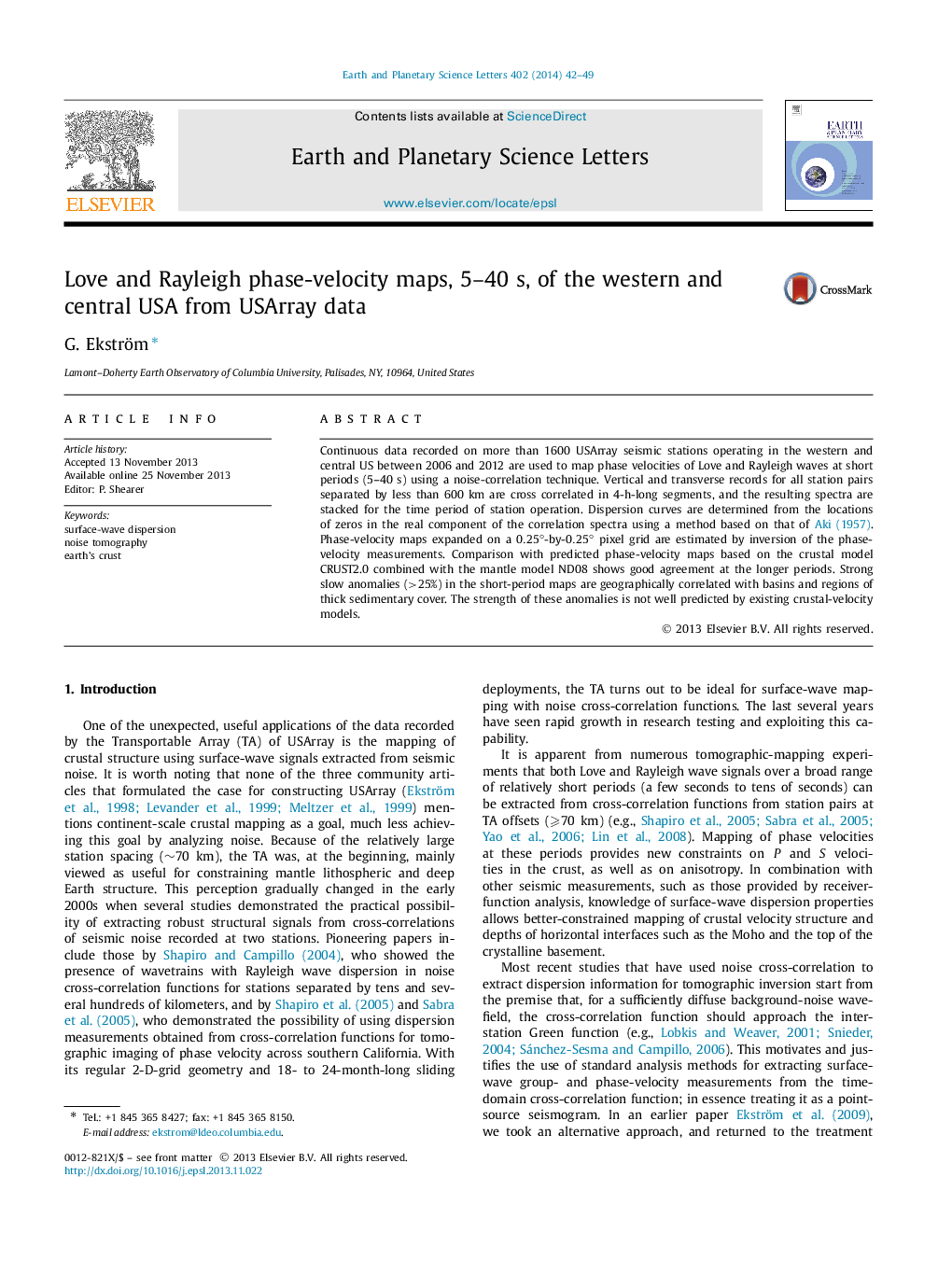| Article ID | Journal | Published Year | Pages | File Type |
|---|---|---|---|---|
| 4676993 | Earth and Planetary Science Letters | 2014 | 8 Pages |
•An automated spectral method for noise tomography is presented.•The method is applied to USArray TA data for 2006 to 2012.•Phase-velocity maps for periods 5–40 s are determined.•Sedimentary basins are imaged as very slow anomalies.•The slowest anomalies are not well predicted by existing models of the crust.
Continuous data recorded on more than 1600 USArray seismic stations operating in the western and central US between 2006 and 2012 are used to map phase velocities of Love and Rayleigh waves at short periods (5–40 s) using a noise-correlation technique. Vertical and transverse records for all station pairs separated by less than 600 km are cross correlated in 4-h-long segments, and the resulting spectra are stacked for the time period of station operation. Dispersion curves are determined from the locations of zeros in the real component of the correlation spectra using a method based on that of Aki (1957). Phase-velocity maps expanded on a 0.25°-by-0.25° pixel grid are estimated by inversion of the phase-velocity measurements. Comparison with predicted phase-velocity maps based on the crustal model CRUST2.0 combined with the mantle model ND08 shows good agreement at the longer periods. Strong slow anomalies (>25%>25%) in the short-period maps are geographically correlated with basins and regions of thick sedimentary cover. The strength of these anomalies is not well predicted by existing crustal-velocity models.
